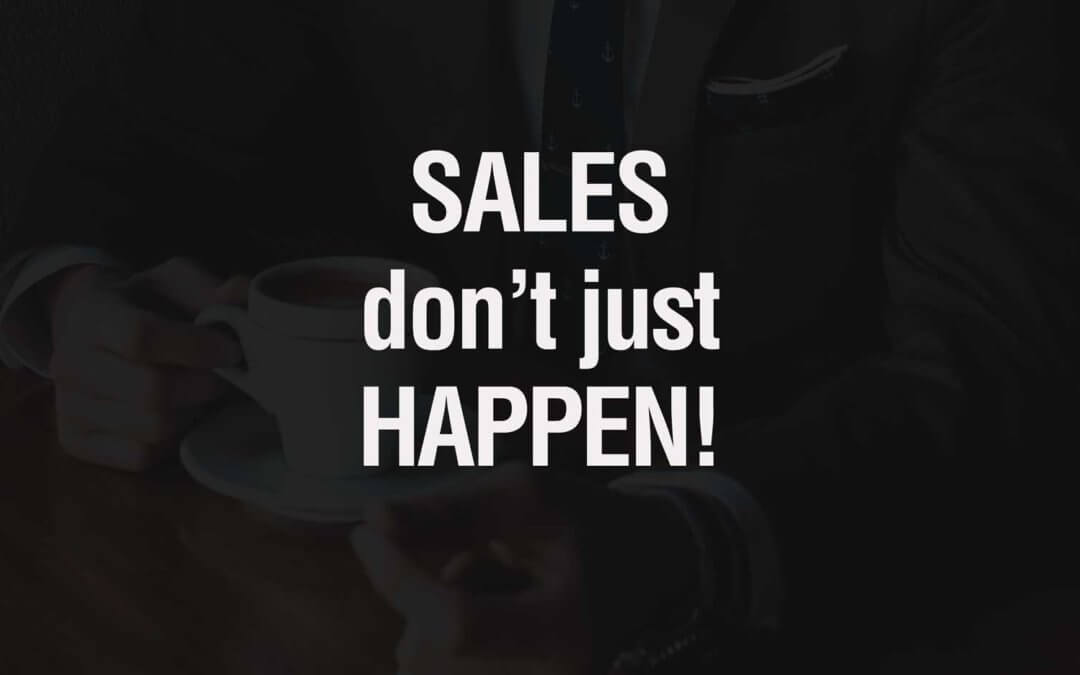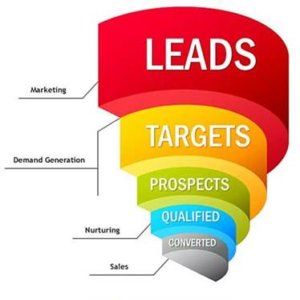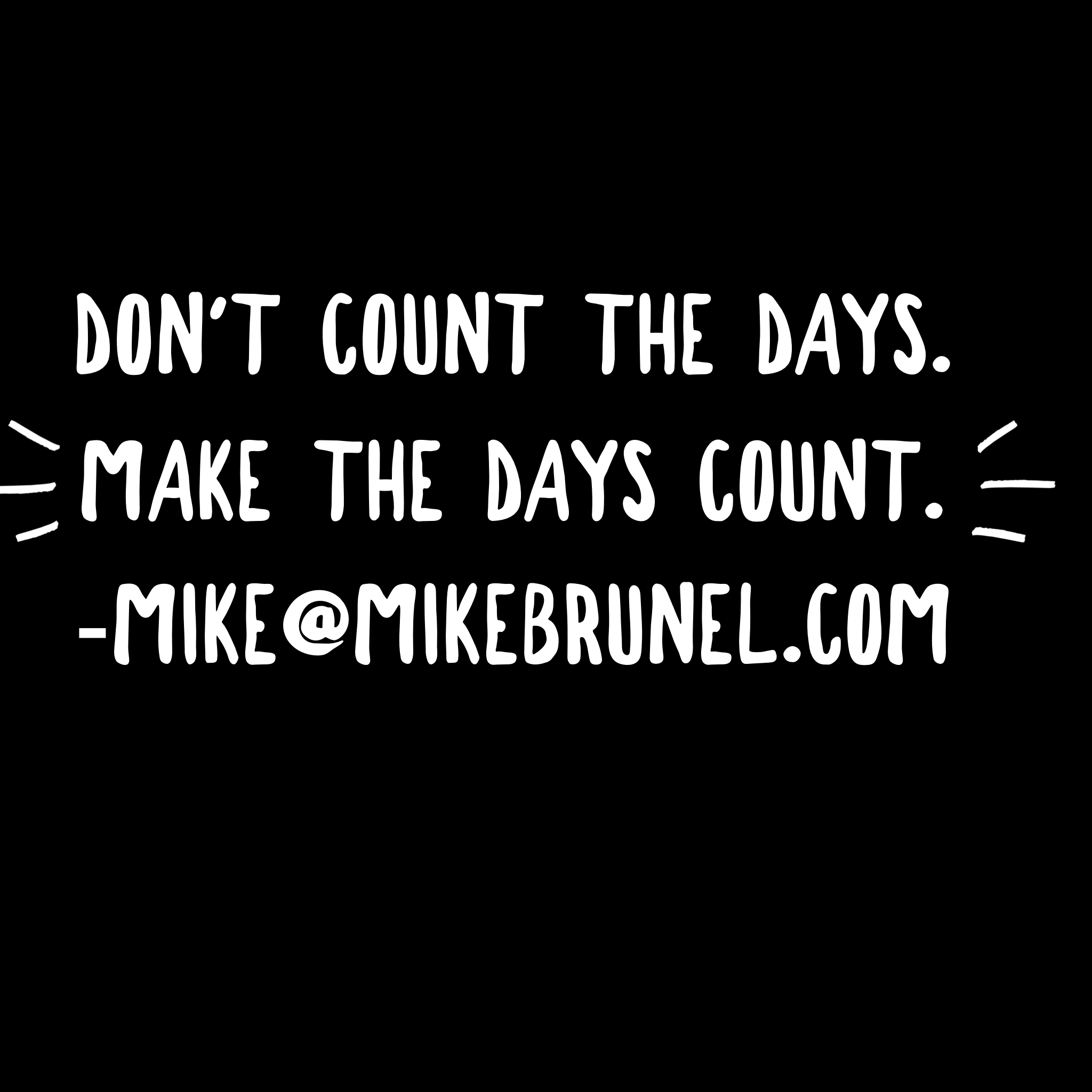by Mike Brunel | Jan 31, 2022 | Sales
Well managed well throughout incentive programs play an important part in achieving and exceeding sales targets. If you incentives are structured properly they can result in a high level of motivation.
Here are a few basic principles I recommend to my clients.
- Avoid incentives where individual salespeople are competing directly with each other to win a single prize. This often causes animosity. It is much better to ensure that every person has a chance to achieve an incentive by reaching a certain level of sales.
2. Incentives should be introduced with some pizzazz and excitement to help generate an air of urgency. Incentives are designed to get salespeople excited and motivated so the way they are presented needs to reflect this.
3. Incentives should not be long-term – usually a month and, under certain circumstances, incentives could be offered for one week only. Don’t’ make the mistake of running incentive programmes more than three months.
The fact is It is hard to sustain interest in incentive programs if they are run the over too long a period of time. Salespeople tend to focus on incentives only when they are close to achieving them. A year-long incentive, for example, will only really generate real interest among salespeople about three months from the end of the year (by which time it’s too late to impact on the result) – for the rest of the year, the incentive seems too far away.
Have a great week selling your stuff.
Mike
PS.Have you tried out my 7-day challenge yet?

PLUS: WHENEVER YOU’RE READY…
Here are 3 ways I can help you make more sales in your business – whether you businesses is big or small.
1. Try the new 7 Days to Sales Success Framework.
Make More Sales in 7 days. The framework of everything you need to get started in making more sales in your business. The Sales Success Framework is based on a simple 7 day challenge. Click here to find out how you can grow your business by making more sales.
2. Join our Private Facebook Group – The Salesmindset Inner Circle. Get all the latest up to date sales ideas.
Every week we do Facebook Live updates on all things sales. Tips, ideas, free coaching, and much more. Join me by clicking here.
3. Work with me One-on-One.
If you’re a business owner, small or large or in the professional services you might just be a few strategies, tactics and tools away from doubling your lead flow, revenue and impact. Jump on a FREE 15 minute Brainstorm call with me by clicking here.
I

by Mike Brunel | Jan 17, 2022 | Sales, Strategy
80%……….Of all sales are made after the fifth call
48%……….Of all sales people call once and quit
25%……….Call twice and quit
10%……….Keep on calling
These statistics is pretty close to the mark in all forms of selling be it a service or product sell.
I think that we all know…
SALES DON’T JUST HAPPEN.
I have created a diagram to illustrate the real time that your buyer is actually available to sell to.
Just email me at mikebrunel.com for a copy.
Why do many some sales people thrive when others do not, here are some ongoing practices I observe every day.
1. Always add to your pipeline.
Not continuously adding to your pipeline is often a mistake that salespeople make once they have established a strong ongoing sales funnel. If you continue to add to your sales pipeline then if that long established client decides that this month they will not buy, then it does not matter because you have more potential opportunities in your pipeline.
If you are always taking the position of helping and assisting your client then your pipeline will increase. If you are only filling up your pipeline when you are desperate then many clients will sense that and you will come across as desperate.
2. Never assume they need you.
I have noticed that many salespeople leave a message with a client or a voicemail and they think it ends there. They think that they have done what they had to do and then move on. Depending on the relationship you have with that client they may or may not call you back. If you do want to do business with them then you have to plan that call and decide the ongoing strategy to get the person to respond. Create a proactive message for them to call you back.
3. Sales potty training.
For those that may have had young children there was a time when you had to train them to go to the toilet. In my experience (a while ago) I always used to say “Pee or get off the pot”. In other words, make a decision.
There will be times when you have to make a decision to get off the pot. Some clients need to be let go. You need to figure out if a prospect is serious about working with you or not. A good pipeline is full of qualified prospects and not “tyre kickers”

All pipeline activities have to support your key messages and understanding actually who your client is and where they play is vital to successful sales.
Good selling
Mike
PLUS: Whenever you’re ready…
Here are 3 ways I can help you make more sales in your business – whether you businesses is big or small.
1. Try the new 7 Days to Sales Success Framework.
Make More Sales in 7 days. The framework of everything you need to get started in making more sales in your business. The Sales Success Framework is based on a simple 7 day challenge. Click here to find out how you can grow your business by making more sales.
2. Join our Private Facebook Group – The Salesmindset Inner Circle. Get all the latest up to date sales ideas.
Every week we do Facebook Live updates on all things sales. Tips, ideas, free coaching, and much more. Join me by clicking here.
3. Work with me One-on-One.
If you’re a business owner, small or large or in the professional services you might just be a few strategies, tactics and tools away from doubling your lead flow, revenue and impact. Jump on a FREE 15 minute Brainstorm call with me by clicking here.
by Mike Brunel | Jan 8, 2022 | Sales
This last week I was asked by one of my clients how they can prospect better.
It does not matter what it is you sell, whether it is a service, or a product.
Prospecting is the lifeblood of any sales organisation.
Would you like to know a system that allows you to stand out from all the salespeople in your market, and position you as the expert in your field?
Credibility is a big factor in sales.
Whether you are a rookie or a veteran, your clients want to see if you have creditability.
They judge you and what you offer, every day.
If you can somehow market yourself as the “go to” person, the one person they think of when they think of sales in your category, you are 90% ahead of every other salesperson in your market. There is case study after case study, where businesses (you are a business) shift from hunting the “prey” to positioning the client to understand your expertise.
One way of doing that is to create a Bio.
How to Create a Bio
Here are 4 simple steps to get started with your bio:
- Write a brief story about yourself. In 25 -30 words, describe yourself professionally. Highlight your qualifications and experience, including any skills you may have that are transferrable from other sectors of your industry.
- Note your business, professional and/or other achievements. You may have achieved some success in sport, been awarded an MBA or raised a family. Show the client that you are a three-dimensional human being, not just a marketing machine.
- Add a photo of yourself. These days, your mobile phone can take good pictures—or just get a friend or colleague to take one. I personally prefer a good black and white photo, as I think it looks just a little more professional than a colour print.
- Describe what you have to offer. Do you have a positioning statement that will instantly tell the client who you are? I have a real-estate friend whose positioning statement is, ‘Dedicated to Superior Customer Service’.
Try these, Good selling for 2022, and please feel free to share.

PLUS: Whenever you’re ready…
Here are 3 ways I can help you make more sales in your business – whether you businesses is big or small.
1. Try the new 7 Days to Sales Success Framework.
Make More Sales in 7 days. The framework of everything you need to get started in making more sales in your business. The Sales Success Framework is based on a simple 7 day challenge. Click here to find out how you can grow your business by making more sales.
2. Join our Private Facebook Group – The Salesmindset Inner Circle. Get all the latest up to date sales ideas.
Every week we do Facebook Live updates on all things sales. Tips, ideas, free coaching, and much more. Join me by clicking here.
3. Work with me One-on-One.
If you’re a business owner, small or large or in the professional services you might just be a few strategies, tactics and tools away from doubling your lead flow, revenue and impact. Jump on a FREE 15 minute Brainstorm call with me by clicking here.
by Mike Brunel | Jan 4, 2022 | Sales
 One Hour a day to Accomplish Your Goals.
One Hour a day to Accomplish Your Goals.
In our first article on goals for 2022, I talked about overcoming the obstacles that prevent you from accomplishing those goals.
In this article, I am going to talk about, spending time each day to help you stay on track and chunk down the activity you devote to achieving your goals.
Do you know that every day you can create an hour to help fulfill your goals and keep you on track?
The answer is “start” each day a little earlier than your fellow workers.
And plan tomorrow today…
One of my early mentors and previous partners at NRS Media, Brian Duffy, taught me this valuable tip.
Plan Tomorrow Today – I first met Brian when he was a consultant to one of the first media companies I worked for.
He would always sit me down on his visits and ask me this simple question:
“Have you set goals for what you are going to achieve tomorrow? More importantly, have you looked at what you have achieved today and congratulated yourself?”
This piece of advice has stayed with me to this day. Most days I plan what I am going to do the next day using this simple method.
At the end of each day, I review what I have achieved for the day, taking about 30 seconds to mentally pat myself on the back.
Even if I only managed to get a couple of tasks done, this simple exercise gives you a sense of achievement. If you don’t do this, you honestly feel as if you have achieved nothing.
Acknowledge your achievements no matter how small they may seem. Every day is a path to appreciation of self.
I then look at what I have not been able to achieve due to timing and other factors and place them on my plan for the following day. No judgments.
I then look at all the meetings and appointments and place them on my plan for the following day as well.
Finally, I take about 10 minutes to study what my priorities are for the month, quarter and year. I select 3-4 goals I want to achieve as soon as I return to my office that is in alignment with these goals.
It works for me; it just might be the tonic for you.
Have fun selling your stuff in 2022.
Mike

PLUS: Whenever you’re ready…
Here are 3 ways I can help you make more sales in your business – whether you businesses is big or small.
1. Try the new 7 Days to Sales Success Framework.
Make more sales in 7 days. The framework of everything you need to get started in making more sales in your business. The Sales Success Framework is based on a simple 7 day challenge. Click here to find out how you can grow your business by making more sales.
2. Join our Private Facebook Group – The Salesmindset Inner Circle. Get all the latest up to date sales ideas.
Every week we do Facebook Live updates on all things sales. Tips, ideas, free coaching, and much more. Join me by clicking here.
3. Work with me One-on-One.
If you’re a business owner, small or large or in the professional services you might just be a few strategies, tactics and tools away from doubling your lead flow, revenue and impact. Jump on a FREE 15 minute Brainstorm call with me by clicking here.
by Mike Brunel | Dec 20, 2021 | Sales
Several years ago, when attending one of Robert Kiyosaki’s courses, he told the group the story of the Black Door.
It was about a young man and a Persian general.
The young man, it is said, was a prisoner of war, and the general was a very fair man. When the day arrived to decide the fate of the prisoner, the general had the prisoner brought before him.
The young man was certain of death, but the general generously gave him two choices.
On the young man’s left was a firing squad, guns poised ready.
On the right was a plain white wall with a large black door in the middle of it.
The young man was given a few moments to determine his fate…the firing squad or the black door.
The young man made his choice and in a short while a volley of shots rang out and the prisoner crumpled to the ground.
The general shook his head and commented to his aide that in all his years he had seen only a few men choose the black door.
“May I ask, sir,” the aide queried- “what lies beyond the black door?” “Freedom.” The general replied.
“The black door leads to freedom, but I have seen only a few men choose it because they are afraid of what horrors may lie beyond.
Most would rather choose a fate that they know, even if it means death, than experience the unknown. The man brave enough to choose the black door deserves to be free.”
Today, in the world of sales we know that change is upon us all the time.
The sad thing is that many salespeople would rather stick with what they know, than what they don’t know.
We experience change in our lives every day, it’s a part of life.
Sales is no different, there will always be an underlying principle to selling, but there is also the unknown.
What does that look like? – It comes in many forms, the approach to selling, discovery, understanding your client’s needs.
These are often driven by them, not you.
The most successful sales people I know are constantly learning; loading up on new information.
Dan Sullivan, at Strategic Coach has a great saying. “Our eyes only see and our ears only hear what our brain is looking for”
Are you ready to choose The Black Door?
For more content like this, please make sure to subscribe to my YouTube channel.

Mike Brunel started mikebrunel.com after being a successful entrepreneur and founder of NRS Media. He co-founded NRS Media in Wellington, New Zealand, expanded it into a global powerhouse in media sales and training, and was eventually responsible for opening offices in London, Atlanta, Toronto, Sydney, Capetown, and Bogota. He has hired hundreds of salespeople around the world.
He made a lot of mistakes when it came to hiring his superstars. Check out his How to Hire A Super Salesperson Each and Every time – It’s packed with tips and ideas on how to hire great salespeople. Don’t ever Hire Bad Salespeople Ever Again. Promise!
by Mike Brunel | Dec 14, 2021 | Sales
Showing people how they can personally profit from your product can be one of the more creative parts of the sales process.
Consider the Dream Room at Gardner’s Mattress & More store. The Dream Room is a private mattress-testing room that allows a unique opportunity to try before you buy.
The room is essentially a sleep sanctuary, adjacent to the showroom. The space is totally private and void of salespeople and other customers, so you can snuggle in and get comfortable. Gardner’s is the only mattress store in their area that offers such an experience.
In fact, I have never heard of any other mattress company offering such a service. You make an appointment, pay a $50 deposit, and spend time in the Gardner’s showroom with one of their sleep consultants.
The consultant helps you narrow your mattress options down to the one you feel best suits your sleep needs. Their team encases your mattress in a proper allergy- and bedbug-proof zippered cover and tops it off with extremely high-quality, fresh sheets and pillowcases, all for you.
Once you enter this Dream Room, you quite literally take a nap. This is your opportunity to “try before you buy.” The proprietors encourage you to bring a good book and simply relax. For couples, they encourage cuddling, although they ask that the bedroom activity stop there; out of respect for the room and future sleepers.
You can even bring pyjamas and your own pillow and sheets if you want. This is a very creative example of the lengths that a business can go to in presenting its product.
For them, every sale is well worth it. Gardner’s average mattress costs around $4,000 and prices go up to a staggering $18,000. How do they do that? What they have created in their business is a sleeping experience, not just a price experience.
By now, their system will sound familiar. They know their product, match it up with the client’s needs, offer some advice customised to each client, and make a presentation that clearly shows the customer what’s in it for them.
From here, all they have to do is ask for the business and negotiate a price. If you look at their website, I challenge you to find price anywhere.
The dollar signs are simply not there. Gardner’s whole strategy takes you out of the price war, and into your personal experience.
There are, I am sure, plenty of mattress companies all over that town that sell off the floor at cheaper prices. Make no mistake, those stores have a purpose; what they sell and how they sell it is fine.
Wouldn’t you still want to make the experience a little better and have more chance of building a relationship?
Positioning your business this way tips off the consumer that what you sell might be something special.
Would you not want your client to know you offer an exceptional experience? The customer-savvy company has a better chance of selling their mattresses than the person down the road.
They get a commitment from you the moment you make an appointment in the Dream Room, strengthen it with a small deposit, chat about what you want, and then take a nice cosy nap.
That’s a sales commitment. More importantly, that’s the best presentation you can make.
For more content like this, please make sure to subscribe to my YouTube channel.

Mike Brunel started mikebrunel.com after being a successful entrepreneur and founder of NRS Media. He co-founded NRS Media in Wellington, New Zealand, expanded it into a global powerhouse in media sales and training, and was eventually responsible for opening offices in London, Atlanta, Toronto, Sydney, Capetown, and Bogota. His products and services are now sold in 23 countries and in 11 languages generating $350 million annually in sales for his clients. Mike sold the company in 2015 and now spends his time following his passions which include rugby, travel. His promise: “I can find thousands of dollars in your business within minutes – GUARANTEED” TRY ME!




 One Hour a day to Accomplish Your Goals.
One Hour a day to Accomplish Your Goals.